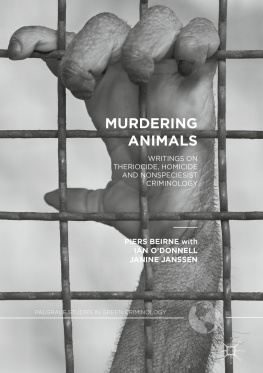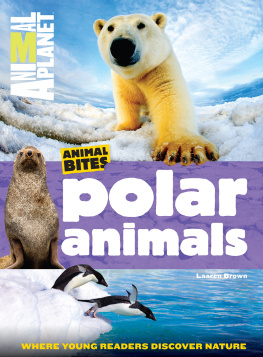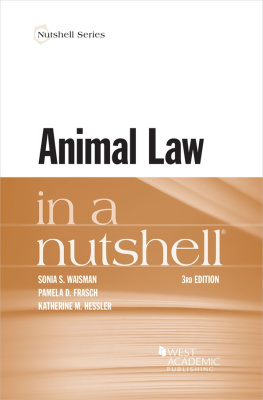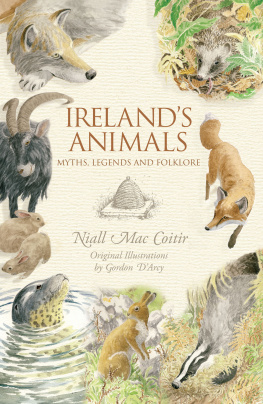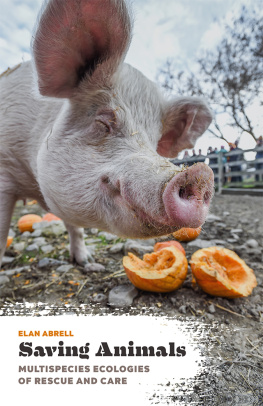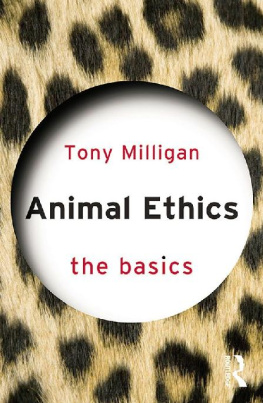1. Introduction: Rights for Whom ?
One winter in the late 1960s I worked as a seasonal employee in a small family-run factory and slaughterhouseBaughansin Colchester, Essex. On the sides of the delivery van that ran between the factory and its retail shop in the town centre, Baughans advertised itself as a High Class Pork Butchers. Its specialty: pork pies and sausages.
My workdays at Baughans were divided into mornings and afternoons. In the mornings I made saveloy sausages. This I did with the aid of a fearsome mechanical grinder, into the top of which I shovelled equal amounts of filling and the boiled body parts of slaughtered pigs. The filling comprised heaped onions, carrots, salt, sage and spices combined with day-old pies, bread and cakes that had been returned to the factory from the retail shop, unsold and stale. The pigs body parts included their brains, livers, hearts, kidneys, entrails, skin, gristle and fatnearly everything, that is, except for the animals bones, heads, trotters (feet) and beers (ears), sold separately as special treats for domesticated dogs. The grinder thoroughly mixed, chopped and compressed all these ingredientsfilling and animal parts, bothbefore ejecting the minced product onto trays to be wrapped in reddened casings fashioned from pigs intestines. Not for nothing did Baughans promote saveloys as savoury and highly seasoned pork sausages!
In the afternoons my job was to dress the heads of a dozen or so decapitated pigs. Armed with stout scissors and an electric razor, I had to shave the pigs heads so as to remove all evidence of their facial hair and bristle. Suitably dressed, a celebratory green apple stuffed into each pigs gaping mouth, their heads were destined to adorn local dining tables at Yuletide and Christmas.
For a long while I suppressed all memory of my time at Baughans the Butcher. My self-stifling in this regard was rudely broken through, however, when, nearly a decade ago, I was confronted with the image of a decapitated pigs head in a painting by the eighteenth-century English artist William Hogarth. The image appears in a detail in Hogarths 1745 oil on canvas The Ladys Death . In it a skeletal dog frantically snatches a disembodied pigs head from a festive dining table. Alerted to the need for some overdue, if painful self-reflection, I discovered soon thereafter that the display of pigs heads was an ancient English custom that had been practised in East Anglian Essex by the Saxons and perhaps even earlier by the Celtic warrior Boudicashe, the rebel queen who had led the massacre of Roman soldiers and the suspension of their imperium in Colchester and London.
As it happened, my jarring introduction to the decapitated pigs head in Hogarths art coincided with an invitation to participate in a panel on green criminology sponsored by the United Nations (UN) at the annual meetings of the American Society of Criminology. My intention there was to provide a platform for dialogue between the nascent green movement in criminology and a variety of UN agencies which, in their everyday policy-making work, profess to promote the welfare of animals. But my plans in this regard were interrupted and then largely abandoned when, as part of my preparation for this task, I felt obliged to revisit the original wording of the UNs Universal Declaration of Human Rights. Adopted by the UN General Assembly on 10 December 1948, the first two articles of the Declaration are as follows:
All human beings are born free and equal in dignity and rights. They are endowed with reason and conscience and should act towards one another in a spirit of brotherhood.
Everyone is entitled to all the rights and freedoms set forth in this Declaration, without distinction of any kind, such as race, colour, sex, language, religion, political or other opinion, national or social origin, property, birth or other status.
Aside from questions about what human rights are or might be and about the persistent gap between their presence in a document of rights and their widespread absence on the ground, of Article 1 it must be asked: Why does the UN persist in declaring that the only beings worthy of entitlement to rights are those named human ? If human beings are endowed with reason and conscience, then what might this imply for the status of humans who are moral patients, that is, those who are brain dead or in advanced stages of Alzheimers disease or congenital analgesia? If the UN is steadfast in its view of the criteria for those who belong to the community of rights holders, then the situation of those humans who are in a coma, for example, is surely very precarious indeed. Because comatose humans are often said to have lost their reason, their conscience and their sentience, then presumably it follows that they must thereby forfeit their status as beings and as bearers of rights. On this view one has to worry whether comatose humans might be sacrificed in scientific experiments or used in blood sports.
There are numerous nonhuman animals (henceforth, animals) about whom it might accurately be said that their capacity to suffer pain or even to reason is no less than that of humans who are in a coma or who are of a very young age. So, why are comatose or new-born humans regarded as members of a moral community whose members act towards each other in a spirit of brotherhood when animals with similar capacities are not so recognized? Moreover, in contradistinction to all other capacities, such as th e capacity to suffer pain, why is the ability to reason elevated to its position as the sole criterion of rights? One answer to this question is surely that through the dogma and power of speciesism we humans tend to exclude animals from our moral community and instead to position them as insensible Cartesian automata that largely exist as our property and who may be used and abused accordingly.
Along similar lines it must be asked about Article 2 of the Universal Declaration of Human Rights: Why are animals excluded from the UNs sheltering umbrella which, as a matter of principle, is extended to everyone without regard to race, colour, sex, language, religion, political or other opinion, national or social origin, property, birth or other status? Why does the UN exclude animals other than humans from its seemingly inclusive embrace of everyone, as in [e]veryone is entitled to all the rights and freedoms set forth in this Declaration without distinction of any kind? Isnt it about time for the UN to reconsider its self-declared privileging of human lives over and above those of all other animals? So, ultimately, the UN must be confronted with the question: Rights for whom ?
This Book
Murdering Animals: Writings on Theriocide, Homicide and Nonspeciesist Criminology crisscrosses the intersections of animal rights theory, criminology and the history of the fine and performing arts. It is the first text in any discipline to argue that if the killing of an animal by a human is as harmful to her as homicide is to a human, then the proper naming of such a death theriocideoffers a remedy, however small, to the extensive privileging of human lives over those of other animals. Whether the focus is on prose, painting, poetry or a play, each chapter addresses the killing of animals by humans, except for Chap. , the repeatedly threatening images of which unfold as the homicide of a father seemingly twice committed by his son. Though each of the chapters can stand alone, I hope it is not too fanciful to suggest that each also leads into the next and at strategic points dissects the others.

